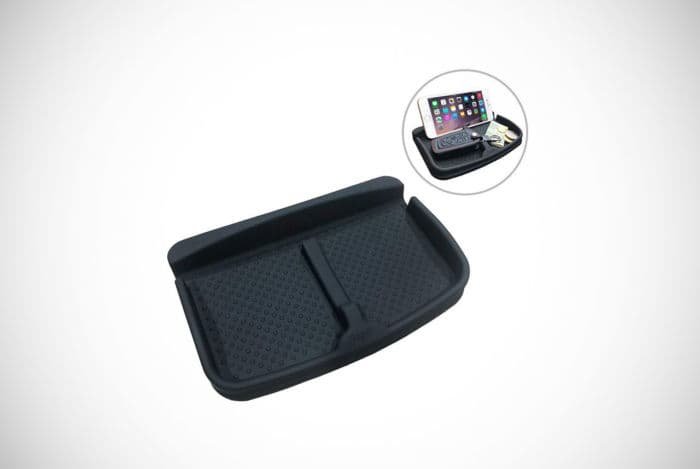
If you're looking for a new sedan, the Honda Civic Type R will not disappoint. This sedan includes a wide range of standard features such as adaptive dampers and high-density padding. This car's key features are listed below. Continue reading to learn about the Honda Civic Type R’s interior. We'll go over the key features that make this car so comfortable to drive.
High rigidity frames
For 2017, Honda is focusing on the safety of its passengers by using advanced crash stroke technology in its body structure. The Civic Type R's frame helps reduce the transfer of crash energy to the cabin and improves overall vehicle dynamics. Honda invented the crash stroke technology in Raymond, Ohio. It can also help reduce cabin intrusion during frontal crashes by directing 80mm from the rearward crash stroke.

High-density padding
The Civic is Honda's flagship model, and its new generation Type R was introduced in July. The Civic Type R has the most sporty Civic yet. The seats provide excellent support during high-performance driving. The Type R seats are covered in red suede and resemble the seats found in a VW GTI hatchback. They are upholstered in high-density padding and have large bolsters to provide optimum support for the driver's posterior.
Adaptive dampers
The Honda Civic Type R's new four-wheel Adaptive Damper System (also known as the "Adaptive Damper System") is a key component of its handling package. The improved shock absorber units now have three-chamber designs which enable greater damping force variability. The damper control can be activated by changing the current flowing through the car's chassis. This system ensures smoother downshifts as well as a better ride quality.
Smart Entry system
The new Honda Civic Type R features a Smart Entry system that allows drivers to enter their vehicle without using a key. Simply place your key fob near the car's handle, then simply walk up and the Smart Entry will unlock the doors to start the engine. To turn off the engine, simply press the LOCK button at the door handle. Alternately, you can activate the Walk Away Auto Lock feature in the car's Settings menu.

Integrated navigation system
The 2017 Honda Civic comes standard with the Integrated Navigation System in the Touring, EX–L Navi Hatchback, Sport Touring trims. It is also standard on the Civic Type R, Touring Coupe trims in the United States. Honda also offers HD Digital Traffic, but only in the United States of America, Alaska, and Puerto Rico. Although it's useful, the system isn't perfect. The menu system isn't well organised and icons are scattered all over the screen. Apple CarPlay or Android Auto connectivity is available on the Civic. They are however not standard.
FAQ
What length is an automotive mechanic apprenticeship?
The apprenticeship to become an automotive mechanic takes about three years. This includes two years at school and two years working as an apprentice. The first year of training is spent in the trade. This includes theory and practical skills as well as safety procedures. You'll also learn the safe and efficient use of tools during this first year. After the first year, a second year will be spent on-thejob training. This year you'll get experience in different trades. These years will offer you the opportunity to attend formal classes.
The final year is dedicated to earning certifications and qualifications in the field. These include NVQs. They are awarded after passing exams on specific topics within the industry. There are also HNCs (Higher National Certificates), which cover general subjects like management, business administration, customer service, and more. City & Guilds certificates offer qualifications in certain trades.
Is it possible to work as an automotive mechanic?
It can be done. Many garages advertise their vacancies online, and many people apply just because they think it might be fun. To get your foot in front of the door, try applying for a few positions to see if any accept student applications. Ask your friends and family to recommend anyone in the field. They may be happy and willing to recommend someone.
Is it hard to be a mechanic apprentice?
It's not simple, but you can learn quickly and there are many avenues for advancement.
You must be patient and persistent. You should also be able to repair cars, trucks, and motorbikes.
Customers and relatives can exert a lot on you. You shouldn't feel pressured to make decisions that you don't like.
It could be a great job choice if you love fixing cars. This job allows you to make a decent wage and build up your company.
However, you might prefer to go down another route. Consider becoming a technician.
This means that you can use your technical knowledge to help other workers. You might be able to assist technicians in troubleshooting problems or teach them new techniques.
You can also become a service advisor. This is where you can offer advice and assistance to customers who bring their vehicles to a garage.
It all depends on your goals. There are many choices available and you can choose what suits you best.
How do I prepare for a mechanic apprenticeship?
It is essential to understand what you are getting into. You should be familiar with the mechanics of cars, and how they work. You will be able to know exactly where to begin when you arrive at the garage for your first day.
You will also need to learn how to fix simple problems like tires and broken lights.
This will teach you how to diagnose problems and fix them yourself.
Also, it is important to know how parts fit together so that you can put them back together.
Finally, it is important to know how tools can be used safely and efficiently.
These are all things that will make you a competent mechanic.
Statistics
- According to the BLS, total auto technician employment is expected to exceed 705,000 by 2030. (uti.edu)
- 52% of Mechanics in the United States think their salaries are enough for the cost of living in their area. (indeed.com)
- There were 749,900 jobs available for automotive service technicians and mechanics in 2016, which is expected to grow by six percent through 2026. (jobhero.com)
External Links
How To
How to correctly diagnose your vehicle for repairs
You should first examine the symptoms your car is showing to determine if it requires repairs. Then, follow these steps to diagnose your vehicle properly.
-
Check engine lights. You should inspect the dashboard lights, such as the engine light indicator and the oil pressure gauge. Also, check the battery light indicator. If they have been flashing for more days than usual, it could be a sign that something is wrong with the vehicle.
-
Inspect the tire treads. If the tires are worn out, they could cause problems with handling and braking. You should inspect the treads on your wheel. They should be clean and smooth. This can be done by removing the wheels from the vehicle and taking them off. A flashlight can be used to check how worn the treads are.
-
Pay attention to the level of your brake fluid. Keep track of the brake fluid level in your vehicle. You can ensure that your brakes are working properly by monitoring the level of brake fluid in your vehicle. If your brake fluid level is low they might not work properly when you apply pressure.
-
Test the suspension system. Most vehicles have a suspension system that absorbs shocks and vibrations. It improves control and allows for smoother accelerations or decelerations. You might notice a wobbly feeling or uncontrollable shaking in your vehicle if it has a problem with its suspension. To test whether your vehicle has a suspension issue, try putting weight on the front or rear axle and observe the movement.
-
Examine the steering column. Steering columns are used to connect the steering wheel to the rest of the vehicle's components. Steering columns can be damaged by accidents. It is recommended to replace any steering column that feels loose, or shakey.
-
Pay close attention to the exhaust tube. Exhaust pipes help move gases from the combustion chamber to the atmosphere. If your exhaust pipe leaks or cracks, it will allow harmful fumes into your cabin. If your tailpipe bends, it is important to fix it immediately.
-
Look under the hood. If you see anything unusual, take a look under the hood. Fluids could be leaking from your engine. In addition, if you notice an unusual smell coming from your engine compartment, you should contact a professional technician.
-
The air filter should be checked. The outside environment can collect dust and other debris in your vehicle's air filters. Your vehicle will run less well if it has a dirty filter. Replace your air filter regularly.
-
Make sure you check the fan belt. The fan belt is the link between the engine and the transmission. If it breaks, the engine won't turn over. Replacing the belt is simple. You will need a screwdriver, pliers and a pair of pliers.
-
Make sure you inspect the radiator hoses and hoses. The radiatorhose carries water from your radiator to the engine. If the hose becomes damaged or cracked, hot liquid can be emitted onto the engine. The hose can be repaired with a pair or needle-nosepliers, and a wire brush.
-
You should inspect the windshield wipers. Windshield wipers use electricity to remove snow and rain. If they stop working they could leave streaks behind on your window glass. Simply change the washer oil to fix the problem.
-
The battery cables should be checked. The batteries provide power to the electrical systems within your car. Always disconnect the negative wire before you replace batteries. Failure to do so can damage your alternator.
-
Make sure your headlights are working properly. The headlights will illuminate the road ahead. They can make it difficult to see if they stop working. Inspect the bulbs for signs of burnt out.
-
Make sure you have your lights on. If you approach other drivers at night, lights will warn them. You could be distracted and cause an accident if one does not work.
-
Make sure you check your brakes. Before you get in a car accident, your brakes will be slowing down your vehicle. If they aren't working correctly, you could lose control of your car and crash.
-
Make sure to change the oil. Keep your engine lubricated with oil. It helps prevent metal parts from wearing out too quickly. It is recommended to change the oil once a month.